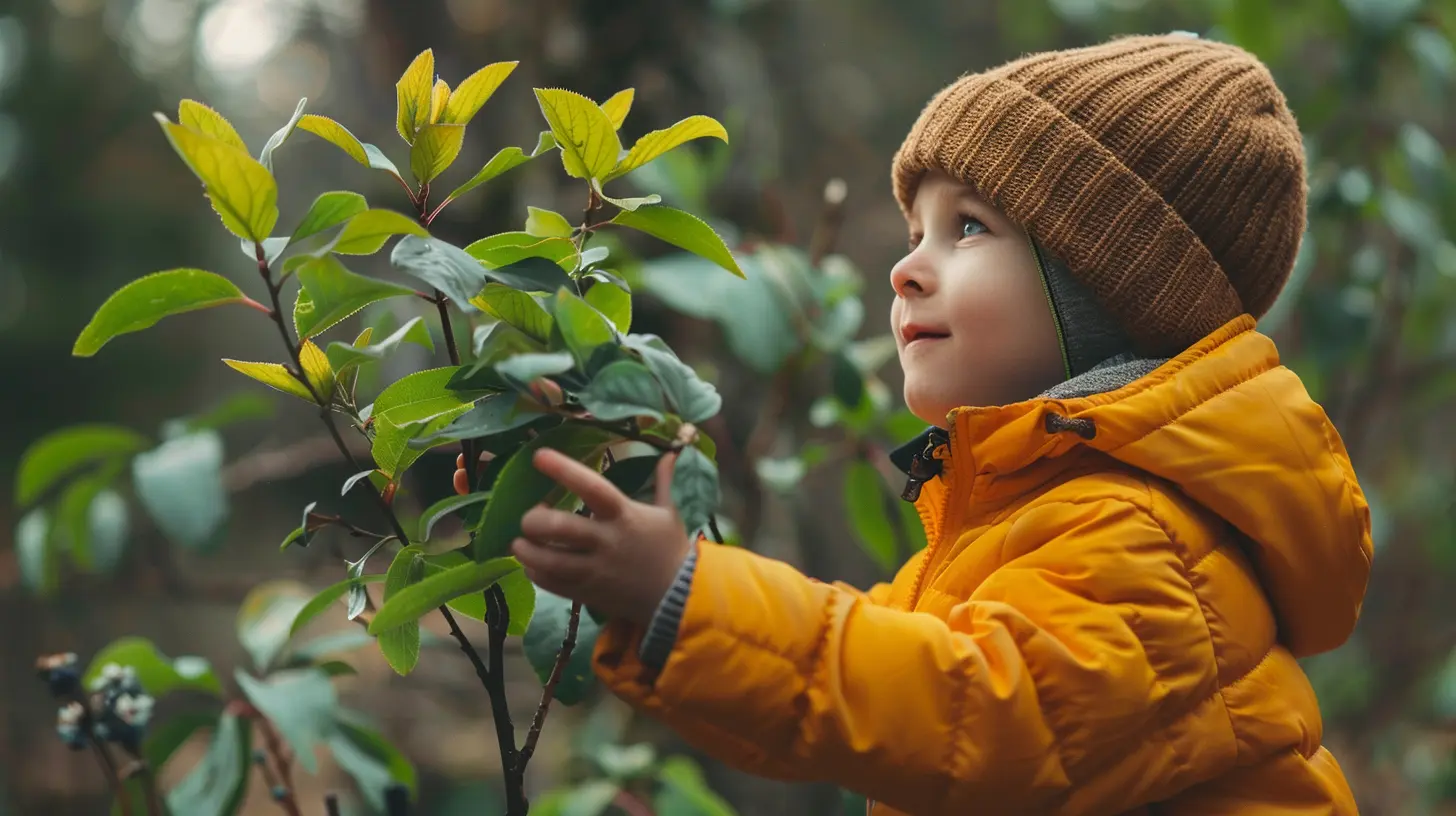Instilling a Growth Mindset in Children
18 August 2025
If you're a parent, you've probably heard the phrase "growth mindset" tossed around at parent-teacher meetings or while scrolling through parenting blogs. It might sound like just another buzzword in modern parenting—but trust me, it’s far more than just that. Instilling a growth mindset in children could be the key to helping them handle challenges, bounce back from failure, and become lifelong learners.
So, what exactly is a growth mindset? Why is it so important? And how can you, as a parent, nurture it in your child—whether they’re a toddler piecing together puzzles or a teenager stressing over exams? Let’s get into it.
What is a Growth Mindset Anyway?
At its core, a growth mindset is the belief that abilities and intelligence can be developed through effort, learning, and persistence. It's the opposite of a fixed mindset, where people believe their talents are set in stone.Think of it this way: A child with a growth mindset looks at a tough math problem and says, “I can’t figure this out...yet,” instead of “I’m just not good at math.”
Who came up with this idea? Psychologist Carol Dweck is the mastermind behind it. Through her research, she found that kids (and adults!) who believe they can grow and improve tend to work harder, embrace challenges, and ultimately achieve more.
Why Does a Growth Mindset Matter?
Let’s be real—life throws curveballs all the time. Whether it’s failing a test, not making the team, or dealing with friend drama, kids face challenges daily. A growth mindset helps them see these obstacles not as dead-ends, but as stepping stones.Here’s why that matters:
- Builds resilience: Kids won’t fall apart at the first sign of failure.
- Boosts confidence: They learn that through effort, they can get better at anything.
- Encourages curiosity: Instead of fearing being wrong, they embrace learning.
- Promotes healthy self-esteem: Achievements feel earned, not handed out.
In short, this mindset sets kids up not just to succeed in school but in life.
Spotting the Difference: Growth vs. Fixed Mindset
Before we talk about how to instill a growth mindset, let’s look at how it actually plays out in everyday life.| Situation | Fixed Mindset Reaction | Growth Mindset Reaction |
|-----------|------------------------|--------------------------|
| Struggles with homework | “I’m just dumb.” | “This is hard, but I’m learning.” |
| Doesn’t make the team | “I’ll never be good enough.” | “What can I work on for next time?” |
| Gets a bad grade | “I guess I’m not smart.” | “I need to study differently.” |
| Sees someone do better | “They’re just naturally talented.” | “I can learn from them.” |
Amazing how much power lies in how a child talks to themselves, right?
How Parents Can Foster a Growth Mindset
You have a huge influence on how your child sees themselves and the world. Here’s how to guide them down the path of growth.1. Praise Effort, Not Just Results
This is a big one. When we only compliment kids for being “so smart” or “so talented,” we accidentally reinforce the idea that ability is fixed.Instead, say things like:
- “I love how hard you worked on that project.”
- “You kept trying, even when it was tough. That’s awesome.”
- “You found a different way to solve the problem. Clever thinking!”
By focusing on effort, strategy, and persistence, you’re teaching them that growth is possible.
Tip: Avoid vague praise like “Good job.” Be specific so they know what behavior to repeat.
2. Normalize Mistakes
Let’s face it—mistakes sting. But they’re also gold mines of learning.Help your child see mistakes as part of the process by saying things like:
- “Oops! What can we learn from that?”
- “Everyone messes up. What matters is how we bounce back.”
- “Failing isn’t the opposite of success; it’s part of it.”
And hey, share your own goof-ups! Kids love knowing their parents aren’t perfect. It makes learning feel safe.
3. Use the Word “Yet”
This tiny three-letter word is magical. It transforms defeat into possibility.- “I can’t do this… yet.”
- “I don’t understand this… yet.”
It gives hope and reminds kids their abilities aren’t stuck—they’re growing.
4. Challenge Them (Gently!)
Growth only happens when we step out of our comfort zone. So, resist the urge to swoop in and “rescue” your child from struggle.Instead of solving the puzzle for them or writing part of their essay, ask:
- “What have you tried so far?”
- “What’s another way you could approach this?”
- “Want a hint instead of an answer?”
Let them wrestle with problems a bit. That’s where real learning lives.
5. Model a Growth Mindset Yourself
Kids are excellent mimics—you’ve probably noticed that already. If they see you trying new things, embracing challenges, and saying “Well, I haven’t figured it out yet,” they’ll mirror that attitude.Try saying:
- “I had a tough day at work, but I’m learning how to handle it better.”
- “I’m not great at this, but I want to improve.”
- “I used to struggle with that too!”
Be the growth mindset you want your child to adopt.
6. Encourage Curiosity Over Perfection
Instead of asking, “Did you get all the answers right?” ask, “What did you learn?” or “What surprised you today?”This subtle shift tells your child that learning matters more than getting it “perfect.”
And if your child is a perfectionist? Remind them that excellence comes from experimentation, not perfection. Even great scientists “fail” more than they succeed.
7. Create a Safe Environment for Learning
If kids fear being judged or ridiculed, they’ll stop trying. Simple as that.Make your home a judgment-free zone where:
- Questions are celebrated.
- Mistakes are seen as stepping-stones.
- Effort is always acknowledged.
This safe space becomes their launchpad for taking risks and embracing growth.
Age-by-Age Tips for Nurturing Growth Mindset
Here’s how you can adapt your approach as your child grows.Toddlers & Preschoolers
- Use “yet” often: “You’re not reading that word yet, but you’re getting there!”- Celebrate effort: “You tried tying your shoe all by yourself!”
- Read books about perseverance (like The Little Engine That Could).
Elementary Schoolers
- Encourage trying new skills without fear of failure.- Talk about brain growth: “Every time you practice, your brain gets stronger!”
- Involve them in problem-solving instead of giving quick solutions.
Tweens & Teens
- Discuss real-life role models who failed before succeeding.- Talk about your own struggles with learning or work challenges.
- Encourage goal-setting and reflecting on what they’ve learned.
Helpful Phrases to Use with Your Child
Sometimes it’s tough to know what to say in the moment. Here are a few go-to lines that support a growth mindset:- “What strategy did you use?”
- “That was a creative solution!”
- “Let’s figure it out together.”
- “You don’t understand it… yet.”
- “Mistakes help us learn. What can we do differently next time?”
- “I’m proud of how hard you worked—even if it didn’t turn out perfect.”
Use these often, and they’ll become part of your child’s internal dialogue.
Common Pitfalls to Avoid
Even well-meaning parents can accidentally squash a growth mindset. Be on the lookout for:- Overpraising intelligence (“You’re so smart!”) instead of effort.
- Jumping in too fast to solve problems for them.
- Criticizing mistakes harshly (it builds fear, not growth).
- Comparing your child to others (it shifts focus from learning to competing).
Remember, progress isn’t always visible right away. Growth isn’t a straight line—it’s more like a wild rollercoaster. Buckle up.
Final Thoughts: It’s a Journey, Not a Switch
No child flips from a fixed to a growth mindset overnight (and honestly, neither do adults). It’s a daily practice, like brushing teeth or saying please and thank you.Your love, encouragement, and modeling can open your child’s mind to the thrill of learning. Even when they fail. Even when it’s hard.
So next time your child struggles, don’t panic. Smile and say, “Wow, this is a great opportunity to grow.” They might roll their eyes… but deep down, they’re listening.
all images in this post were generated using AI tools
Category:
Life Skills For KidsAuthor:

Maya Underwood
Discussion
rate this article
1 comments
Wren Cox
Embracing challenges truly nurtures their potential growth.
September 1, 2025 at 2:35 AM

Maya Underwood
Absolutely! Embracing challenges is key to fostering resilience and unlocking a child's full potential.


